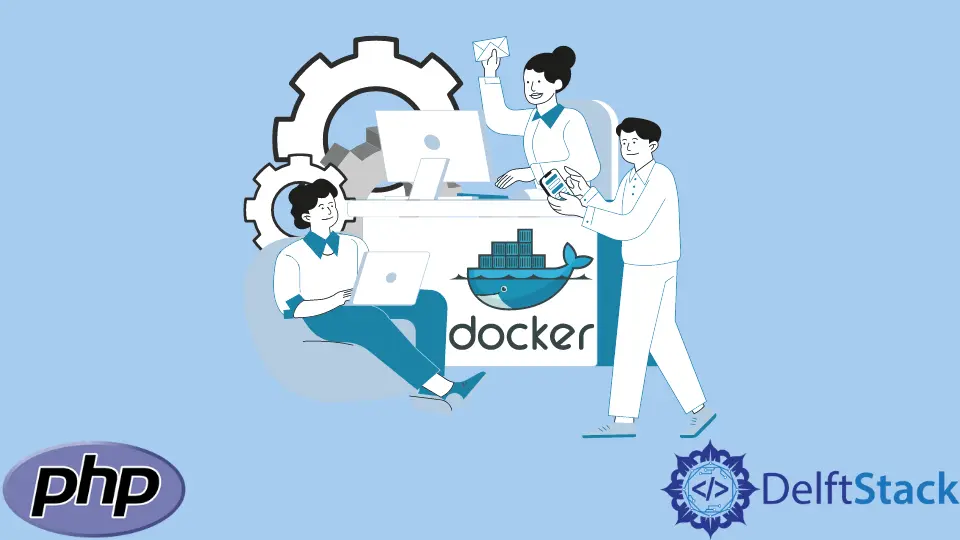How to Set Up PHP-FPM and Nginx Docker Containers

This tutorial will discuss how to set up your PHP, PHP-FPM, and NGINX containers when developing locally on Docker.
Takeaways:
- Construct and run containers on your command line.
- The Docker file and its uses.
- How containers interact.
Ensure you have the Docker program, and Git Bash installed on your device.
Set Up the PHP CLI Container
We will create the directory C:/delft/docker-php/app, where we store our source code:
mkdir -p "C:/delft/docker-php/app"
In our tutorial, we will use the official PHP image. We run the code below;
docker run -d --name docker-php -v "C:/delft/docker-php/app":/var/www php:7.0-cli
This means,
docker run- This will run a container.-d- It will run in the background (detached).--name docker-php- This will specify thedocker-php.-v "C:/delft/docker-php/app":/var/www- This will sync the directoryC:/delft/docker-php/appon the Windows host with/var/wwwin the container.php:7.0-cli- This will use this image to build the container.
Output:
$ docker run -d --name docker-php -v "C:/delft/docker-php/app":/var/www php:7.0-cli
Unable to find image 'php:7.0-cli' locally
Because our machine does not have the image, Docker will attempt to fetch the image from the official registry.
We run the docker ps -a command to see if the container is running.
You will note that the container stops running immediately after initialization. We need to add the -i argument to the docker run command.
Before running the docker run command again, run the command below.
docker rm docker-php
The command above removes our first docker-php since we can not use it again. We can now run the docker run command with the -i flag.
docker run -di --name docker-php -v "C:/delft/docker-php/app":/var/www php:7.0-cli
7b3024a542a2d25fd36cef96f4ea689ec7ebb758818758300097a7be3ad2c2f6
Run the docker ps -a command to check if the container is running.
To log in, run the command below;
winpty docker exec -it docker-php bash
Set Up a Web Stack With PHP-FPM and NGINX
Let us now discuss how you can set up the PHP-FPM and Nginx containers.
Set Up NGINX
We begin with getting a server that will act as the container to run the official Nginx image. We will create a docker-compose.yml to run our latest Nginx image. We will utilize ports 80 and 8080.
web:
image: nginx:latest
ports:
- "8080:80"
We then run the docker-compose up command.
Output:

Let us mount the docker-compose.yml file to a local repository. We will use the folder delft, where our docker-compose.yml file is located.
web:
image: nginx:latest
ports:
- "8080:80"
volumes:
- ./delft:/delft
At this point, Nginx does not know our folder exists. We will use the following site.conf file to resolve this.
server {
index index.html;
server_name php-docker.local;
error_log /var/log/nginx/error.log;
access_log /var/log/nginx/access.log;
root /delft;
}
We need to activate the setup. Let us modify the docker-compose.yml file some more.
web:
image: nginx:latest
ports:
- "8080:80"
volumes:
- ./delft:/delft
- ./site.conf:/etc/nginx/conf.d/site.conf
We can now add an index.html to our deft folder and run the code below;
docker-compose up
Our Nginx should be up and running.
Add PHP-FPM
The next step is to fetch the official PHP7-FPM, which will link to our Nginx container. The updated docker-compose.yml file should look like this.
web:
image: nginx:latest
ports:
- "8080:80"
volumes:
- ./delft:/delft
- ./site.conf:/etc/nginx/conf.d/site.conf
links:
- php
php:
image: php:7-fpm
We will now configure our Nginx container to interpret PHP files using the PHP-FPM container. Our updated site.conf file will read,
server {
index index.php index.html;
server_name php-docker.local;
error_log /var/log/nginx/error.log;
access_log /var/log/nginx/access.log;
root /delft;
location ~ \.php$ {
try_files $uri =404;
fastcgi_split_path_info ^(.+\.php)(/.+)$;
fastcgi_pass php:9000;
fastcgi_index index.php;
include fastcgi_params;
fastcgi_param SCRIPT_FILENAME $document_root$fastcgi_script_name;
fastcgi_param PATH_INFO $fastcgi_path_info;
}
}
Let us test the program. First, we will rename our index.html file to index.php and change the contents to the following.
<?php
echo phpinfo();
Before running the docker-compose up command, we must mount our delft folder to our PHP container. The final iteration to our docker-compose.yml file will read,
web:
image: nginx:latest
ports:
- "8080:80"
volumes:
- ./delft:/delft
- ./site.conf:/etc/nginx/conf.d/site.conf
links:
- php
php:
image: php:7-fpm
volumes:
- ./delft:/delft
Running the docker-compose up command yields the image below.

That sums up our tutorial.
John is a Git and PowerShell geek. He uses his expertise in the version control system to help businesses manage their source code. According to him, Shell scripting is the number one choice for automating the management of systems.
LinkedIn